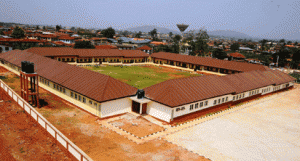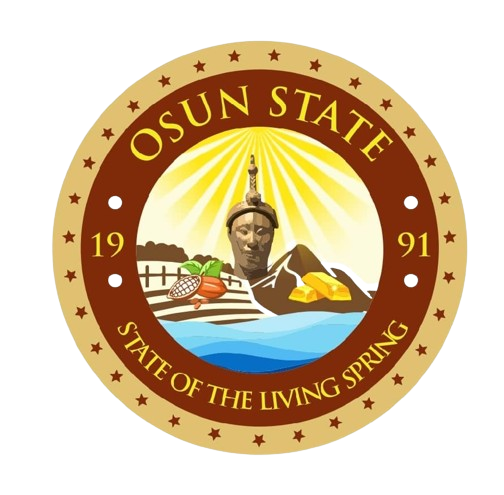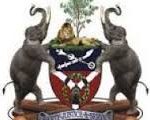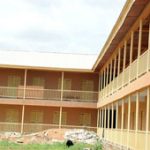
Espousing State Of Osun’s Government Unusual

It does not matter from what part of the State of Osun you come from or in which part you reside; as long as it is within the confines of its boundaries, government presence will get to you. In many other states in the country, governance usually revolves around the state capital.
But in the unusual governance style in the State of Osun, the government is pursuing the development of the state capital, the other urban centres and the hinterlands side by side. The governments policy is that development will be evenly spread out throughout the state. Thus, development will not just come, it will also come evenly throughout the 30 local government areas as the State Government seems to be pursuing an even development strategy in the State.
The Ogbeni Rauf Aregesola-led government in the State appears poised to spread development evenly across the State of Osun. Whether it is in the area of road construction or construction of schools and other infrastructure, the state government operates a sort of what is good for the goose is good for the gander approach in citing infrastructure. For instance, the state Government is presently constructing over 280 kilometres of road throughout the state spread out at approximately 10 kilometres per local government, Hon. Ajibola Bashiru, the Commissioner for Rural Integration and Special Duties argued that prior to the coming of the Aregbesola administration, indigenes left the hinterlands in droves in search of greener pasture in the urban centres.
He said the implication of the massive rural- urban drift was not just communities on the road to extinction but an impending population explosion in the urban centres with all the vices that accompany such drift.
Bashiru, argued that the strategy of spreading out development “is actually aimed at killing two birds with one stone. Apart from halting the rural – urban migration, which occurs when there is lack of development in the rural areas, developing the hinterlands could reverse this trend and promote urban to rural migration. The urban – rural migration will thus ensure that the urban areas are not congested and that there is not much pressure on the infrastructure because when the infrastructure in the urban centres are the same with those in rural areas, there will be no need for the migration.
“The circumstances of Osun people will not allow us run an usual government. The difference between what is going on in the State of Osun and what is going on in some other states is that we went into government prepared.
He said the policy strategies responsible for the developmental projects going on in Osun State are based on what is popularly referred to as ‘The Green Book’. ‘The Green Book’ is actually a document entitled ‘People Friendly Government: (Government that Exist Solely for the Welfare of the People)’ My Pact with the People of Osun State; Land of the Living Spring, written by Aregbesola in 2005.
Bashiru said The Green Book is “the reference resource that the current leadership follows. It provides a peek into the development direction envisioned by the governor and his team.”
In the document written two years before he was elected governor, Aregbesola regretted the prevailing situation whereby the ruling class have not improved on the security and welfare of the populace. He had written that “my mission and ambition are to restore to the people, a state of peace, and opportunity for progress and room for the pursuit of prosperity in our time under a people friendly government. I give you Six-Point Integral Action Plan, to the intent that they constitute my articles of faith concerning which I want to be held accountable at any time during my stewardship.”
These action plans included: Banish Poverty; Banish Hunger; Banish Unemployment (Create work/wealth); Restore Healthy living; Promote Functional Education; and Enhance Communal Peace and Progress.
This Six-Point Integral Action Plan has since become the economic and infrastructural blueprint of the state, even as they seem inter-looped. For instance, in embarking on the re-classification of schools, the Government of the State of Osun not only delivered functional education but also generated employment.
According to Bashiru, “In February 2011, the Education Summit held in the state had revealed that only about 3% of the students from the state were qualified for tertiary education. The reclassification of schools is already yielding results as the state has moved up the ladder from number 34 to number 8 within three years of the Aregbesola-led government. 10, 900 teachers have also been employed within the same period.”
The reclassification policy also led to the introduction of uniform dress code for all elementary, middle and high school students in state owned schools. However, with this has come employment creation as Sam & Sara Textile Company, has established one of the largest textile industries in the sub region in the state. It has also employed about 3,000 tailors, indigenes of the State of Osun, thus reducing unemployment. State Government officials say that as a means of achieving unemployment reduction, 80% of labour force for all projects going on in the state come from the state.
Under the new school system; the state is targeting building 100 Elementary Schools, 50 Middle Schools and 20 High Schools as first phase and is poised to commit a whopping sum of N30billion to the school infrastructure upgrade under this phase.
The High School will have facilities such as boarding, staff quarters, standard laboratories, food courts, standard sporting facilities, school hall of 1000minimum sitting capacity and school managers for proper facility management.
As at last count, the state has committed a sum of N14.41billion into school construction of 39 elementary schools, 14 middle schools and 12 high schools while a sum of N1.6billion was expended on renovation of dilapidated and reconstructed schools together with a sum of N2.5billion spent on the purchase of school furniture.
Incidentally, all these schools are built to the same standard and specification. According to the State Government, building the schools to the same specification not only ensures that the same facilities are available in both the urban centres and rural areas, it also ensures that construction cost are not inflated as all the materials are got from the same source.
Also in the process of engaging its youth population, the state government established the Osun Youth Empowerment Scheme (O’YES). Adelewo Adewunmi, Permanent Secretary in the Ministry of Rural Integration and Special Duties explained that O’YES was in response to the administration’s promise of creating 20, 000 jobs within its first 100 days in office. “Nobody had ever done that but we did.” According to him the vacancies was widely advertised in the newspapers and posters.
He said nothing was hidden about the scheme they were told that they will be trained in community and social works; they were told they will sweep streets and cut vegetation by the side of the road and that they will do all sorts of jobs. Incidentally, the scheme also exposed the level in the country.
State Government officials said the first major challenge the administration faced was when 250,000 applications were received for the 20,000 O’YES openings. “Mind you these applications were from people who had a minimum of OND and above. We did not want to tale those with secondary school certificate because we want them to still struggle to further their education.
“We also had the challenge of selecting 20, 000 out of the number of applications. So we had to select based on merit and best practise. We also discovered that there was a difference between planning and implementation. We did not anticipate that there was no place in Nigeria where that number of people could be brought together for three weeks to be trained. There is no facility in Nigeria that could hold 20, 000 people for three weeks. We know because we contacted the military and the police. The best there was at that time was for 5,000 people.
Finally we had to change our approach and posted them to their local government areas and gave them money for feeding and to commute themselves. Incidentally, this became a noble idea. It was interesting to see youths dressed in all white doing community and social service,” and official of the State government said.
From the simple idea of engaging youths in a productive venture rather than leave them ideal and destructive since they say “an ideal mind is the devils workshop”, O’YES has become a revenue machine for the State of Osun.
Today, the youths who underwent the O’YES training have become a reservoir for the manpower needs of the state. 15,000 of them have been employed. While 5,000 of them are employed as teachers and another 3,000 employed in the civil service, the remaining are been engaged in the private sector. Dr. Wale Boluwaduro, Commissioner for Finance in the state also disclosed that an estimated N200 million enters the economy of the State of Osun every month through the O’YES.
An official in the governor’s office said the unusual governance in the state of Osun is because “the administration of Ogbeni Rauf Aregbesola is determined to play its role of giving meaning and purpose to the lives of the people.
“Our human development programmes are based on the provision of the constitution that says the security and welfare of the people shall be the primary purpose of government . Osun has grown to be the 7th largest economy in the country from the 34th we met when we came into office.
DAILY INDEPENDENT



